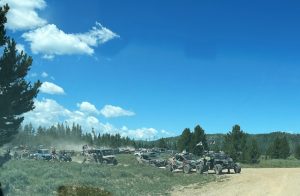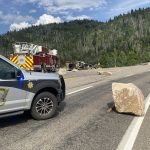Safety advice to avoid, mitigate tree well and deep snow immersion hazards
Northwest Avalanche Institute tracked 106 snow immersion suffocation fatalities at U.S ski areas from 2002 to present

Suzie Romig/Steamboat Pilot & Today
With 3-plus feet of fresh snow falling in a week in Steamboat Springs earlier this month, along with the well-known appeal of tree skiing, experts caution Colorado skiers and riders to stay aware of current hazards such as tree wells and deep snow immersion conditions.
Snowsports safety experts warn skiers and riders to keep a cautious distance from tree wells and to always ski or ride with a buddy.
“A tree well or snow immersion suffocation accident can happen when a skier or snowboarder falls, usually head first, into a tree well or deep loose snow and becomes immobilized and trapped under the snow and suffocates,” according to the educational group DeepSnowSafety.org.
“In an inverted position you can become trapped under the snow. Breathing becomes difficult as the loose snow packs in around you. Without immediate help from your partner, you may suffocate. Prevention of falling into a tree well or areas of deep snow is all-important because the odds of surviving deep snow immersion are low.”
Branches often cover the depth of the well created by tree trunks, which can be several feet deep, according to the Ski California ski industry association. If a person falls in head first, gravity pulls the body down.
Paul Baugher, director of the Northwest Avalanche Institute, has tracked 106 snow immersion suffocation fatalities at U.S ski areas from 2002 to present, including three he counts this ski season at Winter Park, Schweitzer in Idaho and out of bounds near Mount Baker in Washington. In that time period, the highest number per state include 26 in California, 20 in Colorado and 19 in Washington, Baugher said.
Baugher said his accumulated research shows most of the snow immersion suffocation fatalities at ski areas happen after big snowfall events, and many occur later in the day when skiers may be more tired and possibly searching out a fresh line of powder closer to trees.
“In most of the SIS tree well accidents, we found the skier’s or snowboarder’s course took them dangerously close to tree wells,” Baugher said. “The combination of their course and speed resulted in a loss of control that resulted in a forward, or head first, fall. Their momentum took them into the tree well in the lethal inverted position.”
“30% of SIS are deep snow and don’t involve a tree; many of those cases happen in Colorado,” Baugher added.
Dave Byrd, National Ski Areas Association director of risk and regulatory affairs, said while rare, tree well and deep snow fatalities account for more than 10% of all fatalities at U.S. ski areas.
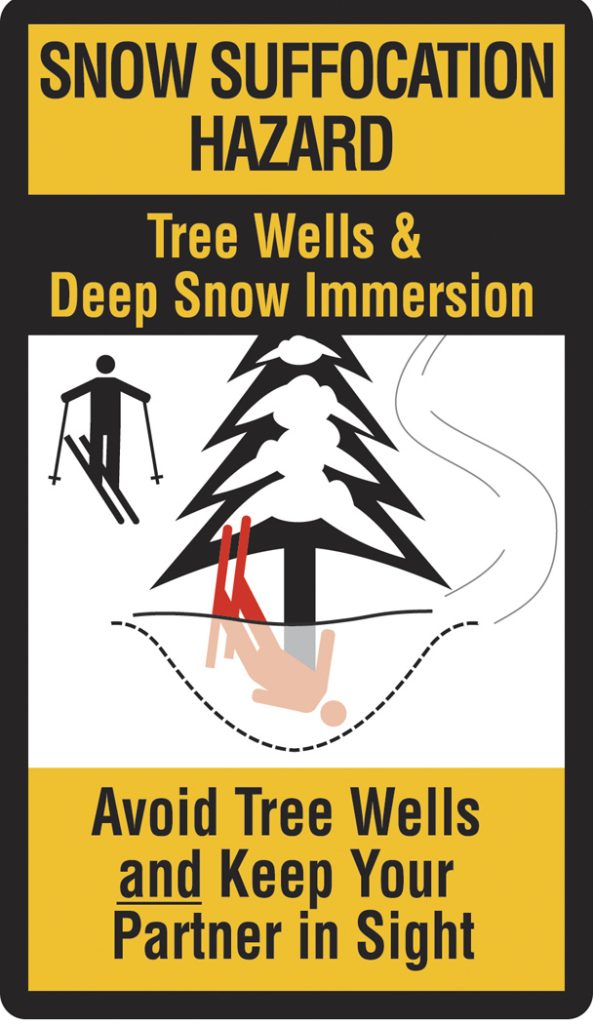
“Steamboat has earned a worldwide reputation for its tree skiing and riding and signature Champagne Powder snow,” according to the Deep Snow and Tree Wells webpage for Steamboat Resort. “Skiing or riding in tree areas and deep snow is an individual choice and carries with it inherent risks. A fall into deep snow or a tree well can be suffocating and fatal.”
On Jan. 12, 2023, a 65-year-old man from Kentucky, who was skiing with his son at Steamboat Resort, died after he crashed into a tree well.
Ski California has posted an informative 4-minute video on YouTube with safety tips to avoid deep snow danger. Ski California advises skiers to keep their eyes on the open spaces between the trees and not on the trees, ski and ride in control, stay out of treed areas if tired, and ski or ride in short pitches and then stop to regroup.
If falling into a tree well, try to grab branches or a tree trunk to keep the head above the feet. Partners should not leave to get help but stay with the immersed person to immediately clear the airway.
According to the National Ski Areas Association: “Skiing and snowboarding off the groomed runs and in deep powder is one of the most exciting and appealing parts of our sport. However, if you decide to leave the groomed trails, you are voluntarily accepting the risk of a deep snow immersion accident.”
Always ski or ride with a buddy, remaining within visual contact.
Stay within 20 to 30 feet from each other with the stronger, more conservative skier in the rear to watch the forward, weaker skier. If the skier in the rear starts to fall, scream to the buddy in front. Some skiers carry a whistle for emergencies.
If falling into a tree well or deep snow, throw arms out in front of the face to create an air pocket.
If caught in a tree well or deep snow, stay calm and maintain the airway. Struggling can cause more snow to cave in.
The buddy digging the immersed person out must come in from the side of the person’s head and move snow away to protect the airway. Rescuers should not dive into the same tree space and try to pull the person out the way they fell in because that can cause snow to fall and block the airway.
Yell for nearby skiers to help dig the person out from the sides. Confirm the immersed person is breathing, and call ski patrol.
Program the Steamboat Ski Patrol number 970-871-5911 into cell phones, and keep cell phones charged.
More information: DeepSnowSafety.org; Safety.skicalifornia.org; SkiSafety.us.
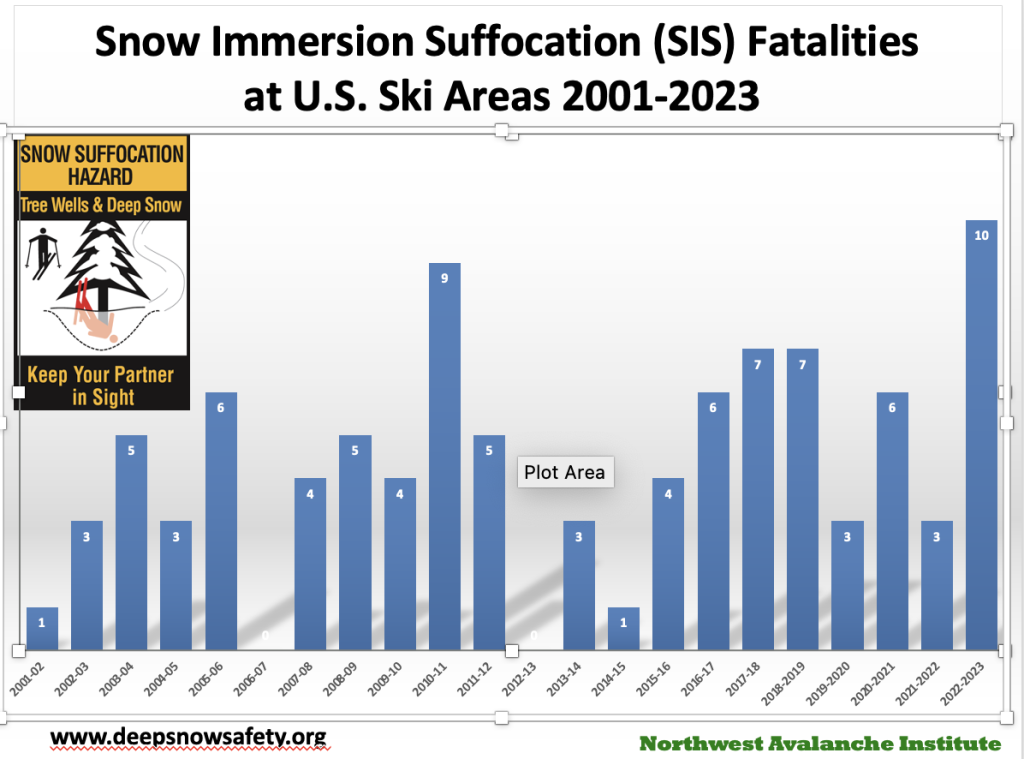
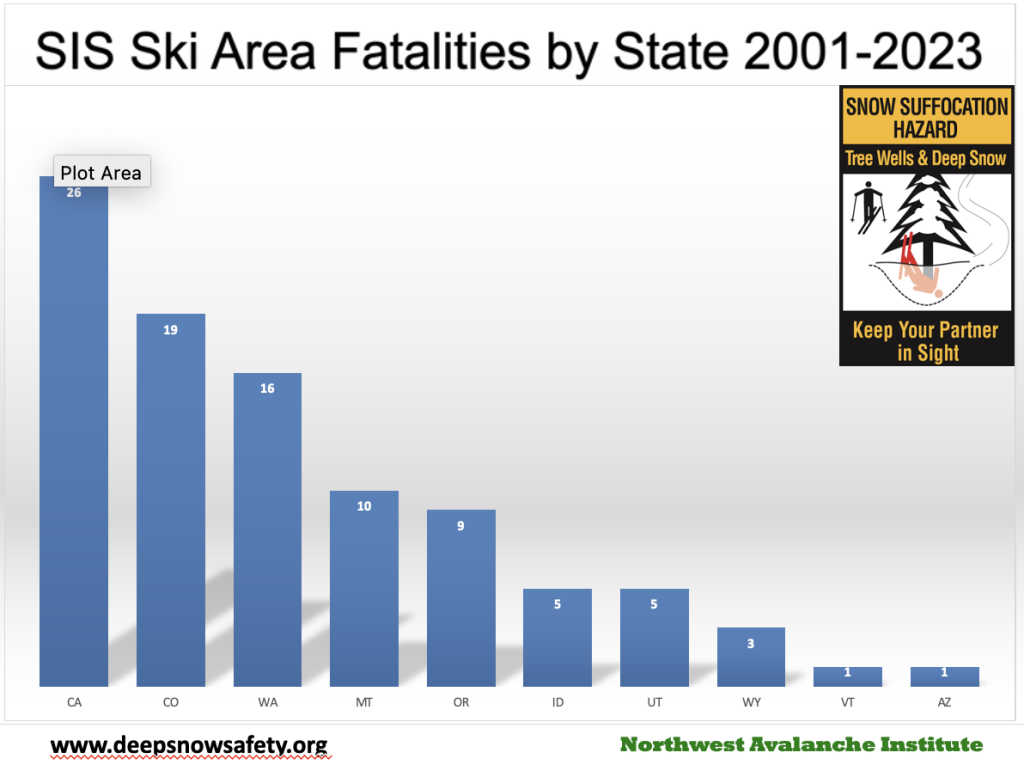
To reach Suzie Romig, call 970-871-4205 or email sromig@SteamboatPilot.com.

Support Local Journalism

Support Local Journalism
Readers around Steamboat and Routt County make the Steamboat Pilot & Today’s work possible. Your financial contribution supports our efforts to deliver quality, locally relevant journalism.
Now more than ever, your support is critical to help us keep our community informed about the evolving coronavirus pandemic and the impact it is having locally. Every contribution, however large or small, will make a difference.
Each donation will be used exclusively for the development and creation of increased news coverage.






